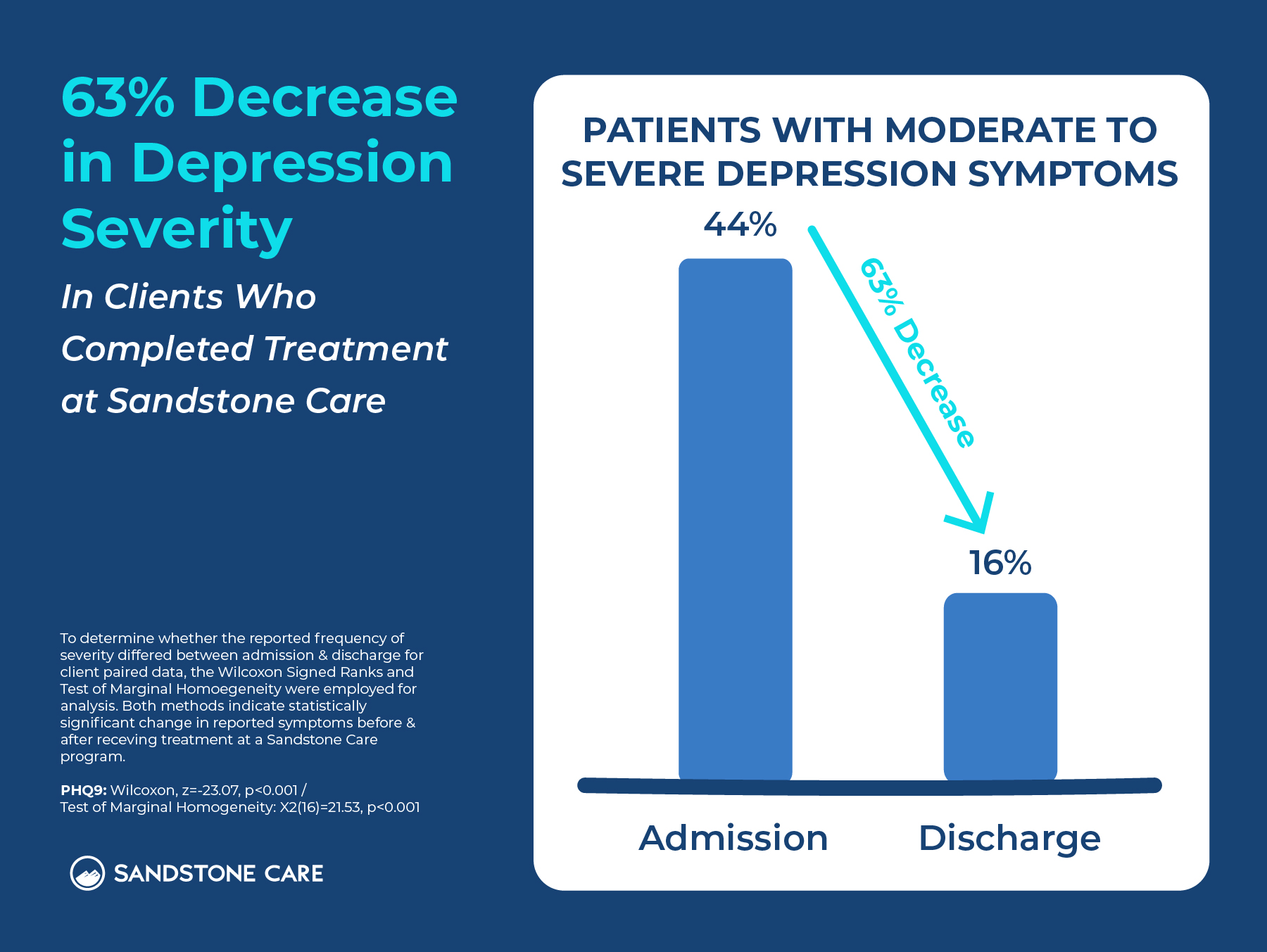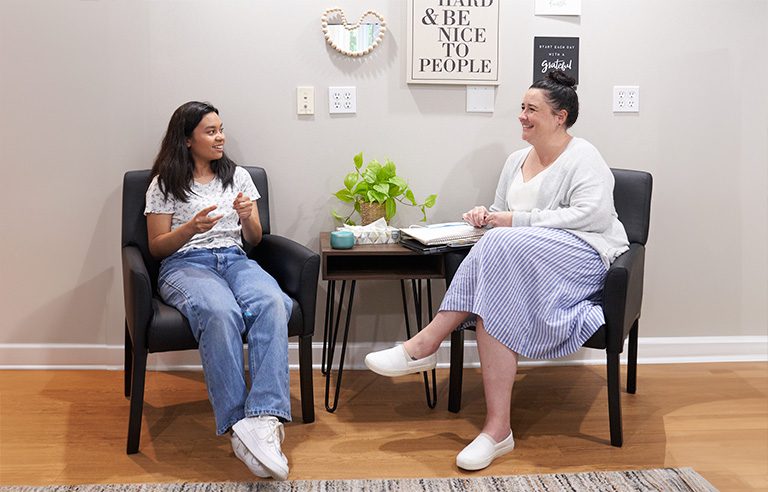Sandstone Care Treatment Outcomes
At Sandstone Care, we don’t just make promises about mental health — we back them up with real data.
Guided by integrity, our clinicians use the gold standard in behavioral health: Measurement-Based Care (MBC). This approach tracks client progress with ongoing, objective data to ensure our treatment programming produces results you can trust.









